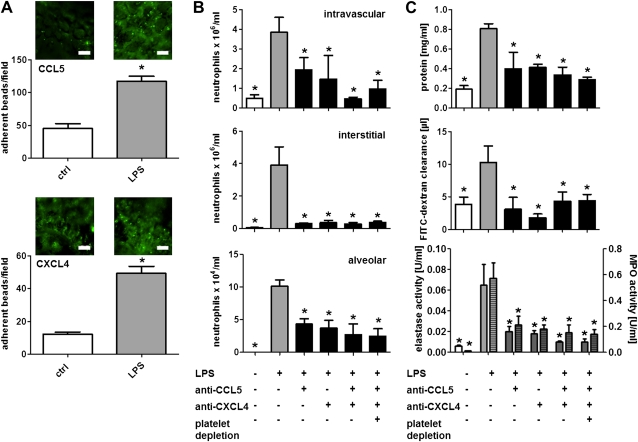Figure 3.
Platelet-derived CCL5 and CXCL4 promote neutrophil recruitment in LPS-induced lung injury. (A) Mice challenged with aerosolized LPS or saline (ctrl) were injected with fluorescent beads conjugated with antibodies to CCL5 (top) or CXCL4 (bottom). Bead immobilization in the lung microcirculation was recorded by fluorescence intravital microscopy. Beads per field were manually counted. Scale bar, 50 μm. n = 5 for each bar. Statistical significance was tested using Mann-Whitney tests. *Indicates significant difference between groups. (B and C) Mice were treated with antibodies to CCL5, CXCL4, or a combination of both. The last group was also depleted of platelets. Thereafter mice were exposed to LPS by inhalation and killed 4 hours later. (B) Displayed are intravascular (top), interstitial (middle), and alveolar neutrophil counts (bottom). (C) Protein concentration (top), fluorescein isothiocyanate (FITC)–dextran clearance (middle), and elastase (bottom, uniform bars) and myeloperoxidase (MPO) activity (bottom, hatched bars) in bronchoalveolar lavage fluids. n = 8–10 for each bar. Statistical significance was tested using one-way analysis of variance with Dunnett post hoc test. *Indicates significant difference compared with LPS-treated mice.

